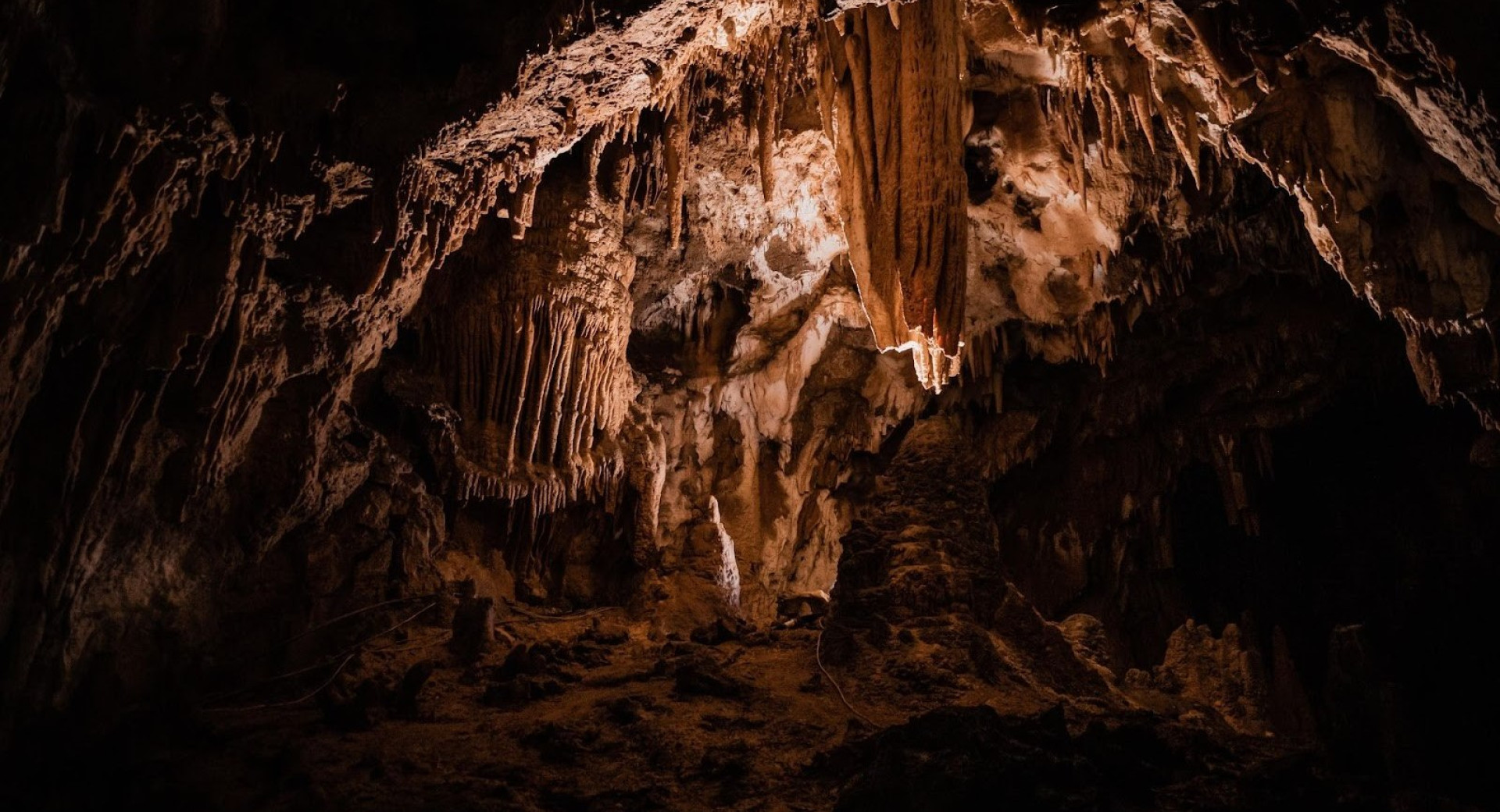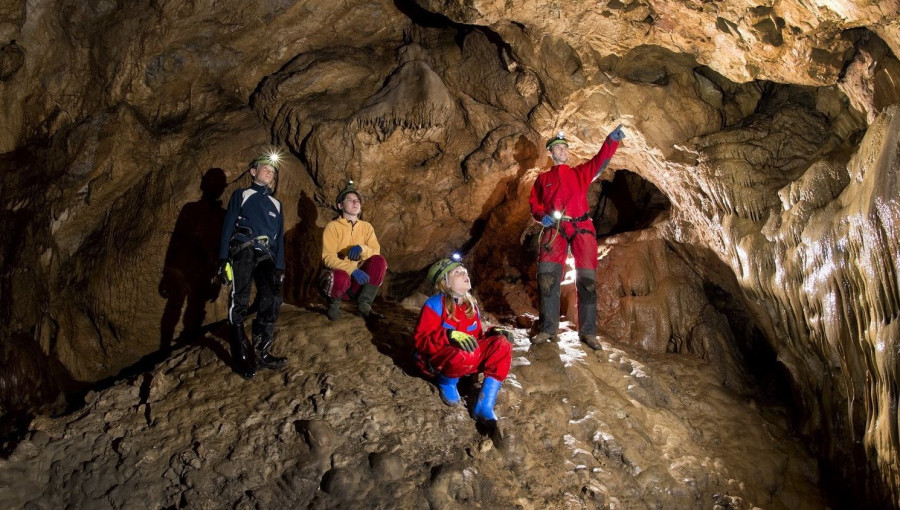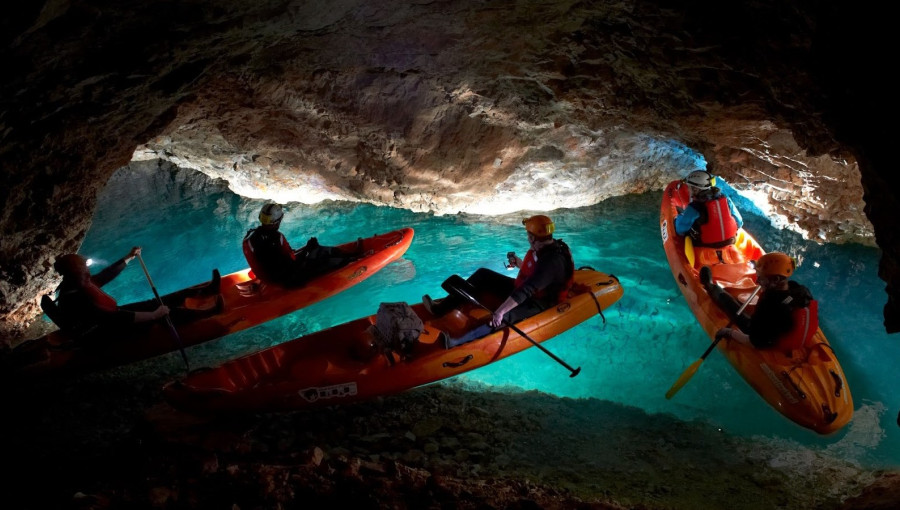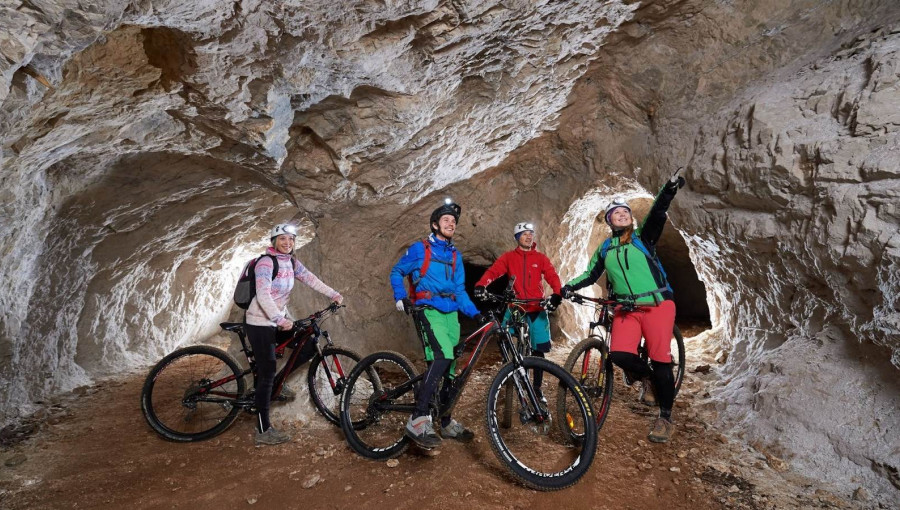Caving Experiences in Slovenia
By now, Slovenia is well known for its mountains, rivers and lush green landscapes. But the incredible geodiversity doesn’t end at the Earth’s surface - there is also a lot to admire underground.

History of Cave Tourism in Slovenia
Don’t think you’re the first to want to marvel at Slovenia’s subterranean palaces. The first records of cave tourism in Slovenia date back to the 17th century, when cavers were already adapting caves for visitors by setting up lightning and secured paths. The Vilenica cave is the oldest tourist cave in Europe - the Holy Roman Emperor, Leopold I, walked through its glorious halls as early as 1660.
Slovenian Karst
Karst is made up of soluble rocks such as limestone and dolomite, allowing for the formation of underground streams, caves, and other fascinating phenomena. Some parts even resemble the Lunar surface.
There are over 10,000 registered caves in Slovenia, and about 100 newly-discovered caves are added to the list every year. Most of them are located in the Karst region and karstic areas in other regions of Slovenia. Slovenian Karst is home to the origins of karst exploration and even gave this geomorphological phenomenon its name, which is derived from the Slovenian word “kras”.
Where to go?
The most popular caves in Slovenia are the world-renowned Postojna cave and the Škocjan caves, but there is also a lot to explore elsewhere. Apart from Karst’s abundance of caves, the mountainous karst in the Julian and Savinjske Alpe hides an underground kingdom waiting to be explored. But there are unique caves all over the country, indeed it would be difficult to find an area without a cave worth seeing.
So, if you want to step off the beaten path and find a more unique, intimate caving experience, look no further! There are several less known caves you can explore individually or in a small group, under the guidance of a professional guide.

You can even have an amazing caving experience in Ljubljana or explore spectacular caves near Bled. So, if you want a break from the masses at the top tourist destinations, head underground for an authentic caving experience. Regardless of the season or weather, your caving plans will be foolproof.
Extreme Caving Experience in Bled
Do you want a more genuine caving experience than walking on artificially made paths? Maybe craving a touch of adrenaline as well? Embark on an extreme caving experience near Bled and combine marveling at dripstones with cave climbing. You will learn basic rope handling techniques to be able to descend by rope to otherwise inaccessible parts of the cave.

Mountain bike through the underground
The aforementioned mines don’t only offer waterways, they also hide bike trails! Yes, you read that correctly, you can ride through subterranean mazes on your bike. Underground mountain biking is a great way to practice your cycling skills and explore abandoned mines. One such mine is in the Carinthia region (Koroška), under the mythical Peca Mountain. Maybe you will be the one to find the king who is sleeping deep in the mountain and finally confirm this Slovenian legend?

Whichever option you choose, spending some time under Slovenia’s surface will surely not disappoint. After all, the most precious things are always hidden.

